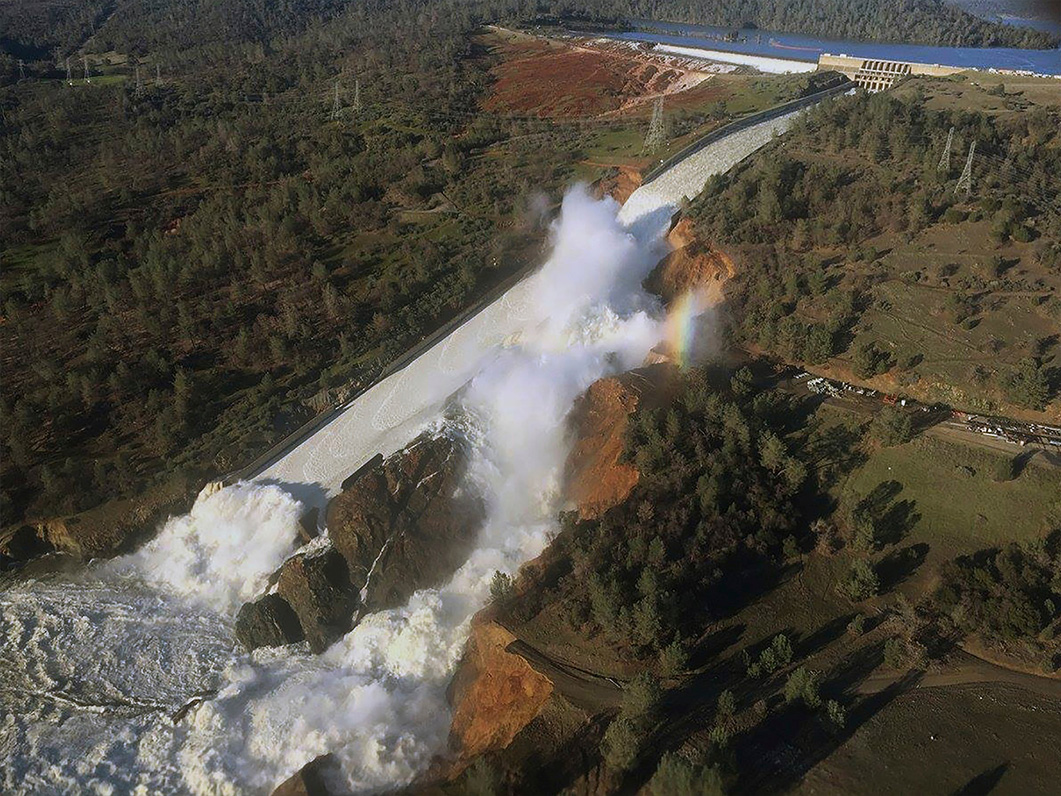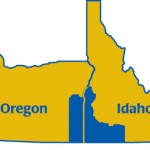As of midday Feb. 14 the immediate threat posed by the deteriorating Oroville Dam north of Sacramento, CA, had lessened somewhat, and federal emergency relief funding was approved to support communities affected by the situation.
In addition, nearly 200,000 individuals who were evacuated on Feb. 6 were allowed to return home but were instructed by officials to “remain vigilant” and ready to leave again, if need be.
OnionBusiness.com is following the California story and will provide updates as they become available.
According to a Feb. 14 report in the Mercury News, Oroville water levels were dropping as state officials worked to “repair the dam’s emergency spillway before the next storm arrives.” The story said that on Tuesday at 9 a.m. Pacific time “the lake’s level had dropped to 888.68 feet, about 12 feet below the Oroville Dam’s capacity of 901 feet. State water officials are continuing to release water through the primary spillway at a flow rate of 100,000 cubic feet per second, or about 748,000 gallons per second.” That story can be accessed at http://www.mercurynews.com/2017/02/14/oroville-dam-update-lake-level-continues-to-drop-tuesday-press-conference-scheduled/.
Federal officials had issued an order on Feb. 13 to “initiate immediate design of emergency repair to minimize further degradation” of both structures, which have been eroding as water flows out of Lake Oroville this week,” according to http://www.redding.com/story/news/nation/california/2017/02/14/oroville-dam-spillway-repair-investigation/97897364/
The Redding story went on to say, “The primary spillway, which technicians use to release water from Lake Oroville into the Feather River as the lake’s water level rises, has a concrete bottom that has had a ‘gaping hole’ in its floor since Feb. 7, officials said. Technicians reduced the amount of water flowing down that spillway and the lake’s level kept rising. On Saturday, the lake reached capacity and water began to flow down a dirt hillside known as the dam’s ‘emergency spillway.’”
The state’s second-largest reservoir – held back by the nation’s tallest dam — had filled to just under 100 percent capacity, nearly 3.5 million acre feet, after record precipitation during the winter. It was also, according to the California Department of Water Resources Data Exchange Center, at 143 percent of its historical average for this date, with the information available at http://cdec.water.ca.gov/cdecapp/resapp/resDetailOrig.action?resid=ORO.
During the week of Feb. 6 the volume of water in the reservoir resulted in a breach of the dam’s main spillway, with the hole growing bigger. State officials began releases over the emergency spillway for the first time in the reservoir’s nearly 50-year history, although numerous accounts have noted the dam’s deterioration was brought to officials’ more than a decade ago. Completed in 1968, the structure showed signs of potential failure in 2005
USA Today published on Feb. 13 at http://www.usatoday.com/story/weather/2017/02/13/oroville-dam-california-drought-over/97849730/ that “The potential failure of California’s Oroville spillway — which caused nearly 200,000 people to flee their homes late Sunday — is further proof that the punishing five-year drought in the northern part of the state is over…,” and a video caption explained, “Oroville Dam holds back swollen Lake Oroville, which is the state’s second-largest reservoir and at 100 percent capacity because of recent heavy rain and snow.”


